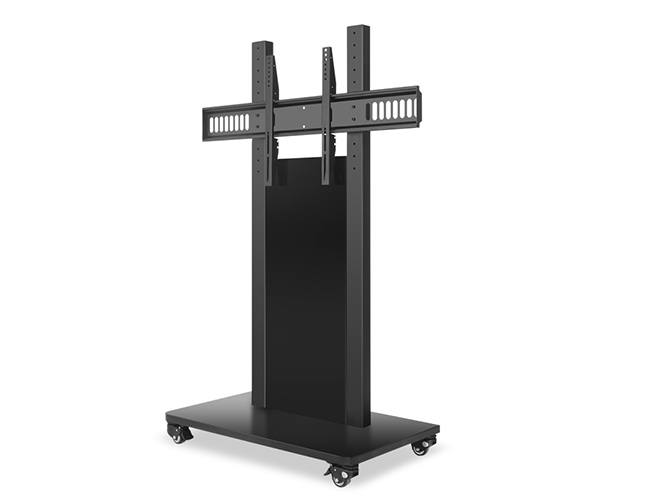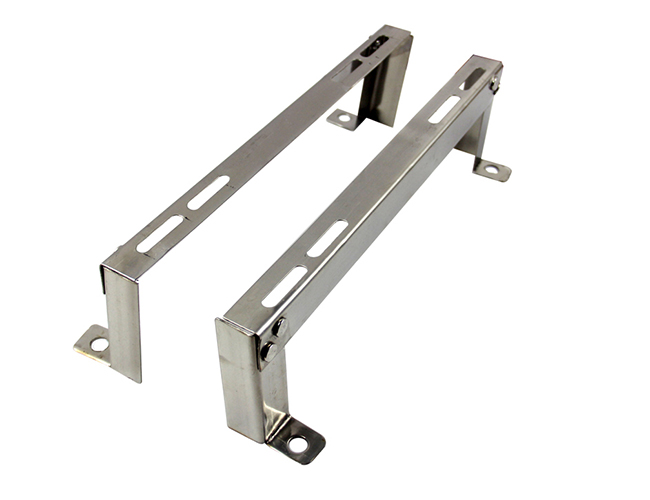




JAVA Metal has several sets of advanced sheet metal processing equipment, which can customize and process all kinds of equipment bracket.
What is a stand? In short, a bracket is used to attach one thing to another, using actual fasteners such as screws to attach the bracket to other parts.

In addition to creating a connection between two parts, a bracket can also provide support. Some brackets, such as gusset brackets, are designed with a diagonal cross-section that reduces strain on the bracket and enables it to support heavier loads.
One of the easiest and most cost-effective ways to manufacture brackets, is sheet metal fabrication. A bracket usually consists of two or more flat surfaces joined along one edge, the easiest way to make such an object is usually to bend a flat object (i.e. a piece of metal) in two or more places: the simplest example is to add A 90° bend into a flat rectangle with a straight profile turns it into a bracket with an L-shaped profile.
Our common bracket types:
L-bracket
L-brackets are one of the most common types of braces. It has an L-shaped profile after being bent along a single axis, usually forming a 90° angle. L-brackets are used in many applications where horizontal objects (such as shelves) need to be mounted to vertical objects (such as walls).
U-bracket
U-brackets are another type of braces. Unlike L-brackets, U-brackets are bent along two axes, creating a U-shaped profile. U-brackets can be used to sandwich an object between its two flanges, or to mount two parallel horizontal objects on top of each other.
Z Bracket
Z-brackets are another type of brace that contains two bends. Unlike U-brackets, however, where both bends are made on the same side of the sheet metal, Z-brackets bend one flange inward and the other outward, creating a Z-shaped profile. Z-brackets can be used to mount parallel surfaces that are offset from each other.
Gusset bracket
A gusset bracket is a bracket that is braced with additional material to increase its strength and load-carrying capacity. It's like an L-bracket, but with an extra triangular section of material between the vertical and horizontal sections. The gussets can be welded to the bracket or included in a single piece: in the latter case, the horizontal and vertical sides of the bracket are bent from the edges of the triangle.
Design Sheet Metal Brackets
An important feature of metal brackets is the holes for fasteners. While wooden or plastic brackets may just be drilled through at the mounting point, metal brackets should have dedicated holes. Determine the fastener size to use when designing the bracket and adjust the hole diameter accordingly. If a nut cannot be used, a threaded (threaded) hole may be required.
Welded sections can be noted in the bracket design, but will incur additional manufacturer charges. Before adding weld elements, consider whether the part can be made from a single piece of metal.
Any machined elements (including holes) will incur additional costs, but keep in mind that machining opens up greater design possibilities for non-standard shapes and decorative touches.
How is the bracket made?
Brackets can be manufactured in various ways, such as casting or CNC machining. However, the best way to make a simple bracket is sheet metal fabrication.
One of the most common sheet metal processes is bending, where a machine called a brake is used to bend sheet metal to an angle of up to 120°. This is probably the most important process when manufacturing sheet metal brackets, as almost all brackets contain at least one bend.
Other sheet metal processes must also be used. Sheet metal must be cut to size using a machine such as a laser or plasma cutter before any bending is made. A punch can be used to punch holes in the brackets (for screws), and welding may be required to add gussets or other features.
In addition to the sheet metal processes described above, CNC machining can also be used to add more complex features to brackets, especially custom designs for non-standard parts.
Can customize cold-rolled sheet, hot-rolled sheet, galvanized sheet, copper sheet, aluminum alloy, stainless steel and other material processing services.
Main Advantages
1.The saw-cut length error is small
2.With the excelsior detail processing, there are no burr and flashing of the processing site.
3.There are no chromatic difference, no bubble and free from pinhole porosity of the external surface treatment.